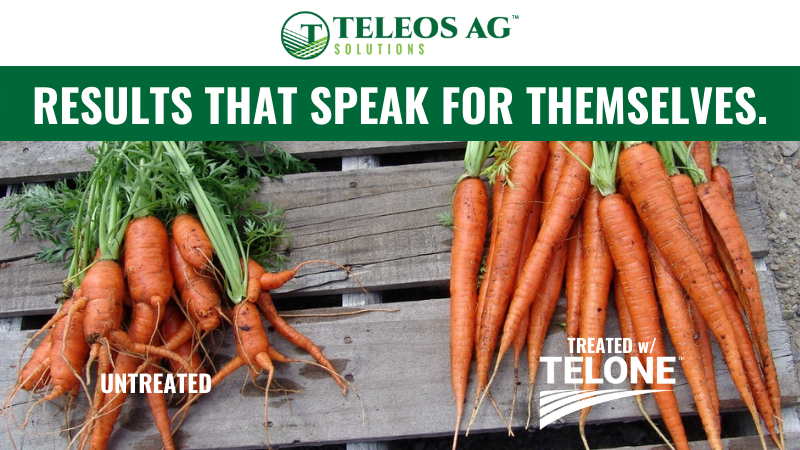How the Produce Industry Is Modernizing Traceability
 Following last year’s E. coli outbreak in romaine lettuce, Walmart mandated all leafy green growers implement blockchain protocol. Large suppliers were given until the end of 2018 to comply. Other growers got a bit more time, to September of this year.
Following last year’s E. coli outbreak in romaine lettuce, Walmart mandated all leafy green growers implement blockchain protocol. Large suppliers were given until the end of 2018 to comply. Other growers got a bit more time, to September of this year.
That mandate gave blockchain technology a boost that many thought would morph into an industry standard. But that doesn’t seem to be happening.
Traditional traceability products are not only alive but thriving. That’s in part to industrywide efforts to convert old paper dependent traceability programs to searchable digital versions. Because of that push, non-blockchain, digital traceability products are competing effectively.
Associations Push for Modernization
Many in the industry have sought a way to improve produce tracebacks for a while now. The old paper version of traceability is unwieldy, especially when public health is in danger.
“Traceability is necessary for the sake of public health (along with better business benefits), and we support PTI [Produce Traceability Initiative] because it uses globally-recognized standards allowing for interoperability throughout the supply chain,” says United Fresh’s Dr. Jennifer McEntire, Vice President of Safety.
“Everybody’s focused on improving the whole process of food safety,” says Wester Growers’ Senior Vice President Hank Giclas.“If you look at the recommendations that came out of last year’s romaine task force, they revolve around the PTI program. And we’d like to see that reinvigorated, not only at the grower-shipper level, but more broadly accepted and adopted at the buyer-distributor level.”
The PTI, a collaboration between several industry associations, aims to converts the entire industry to electronic traceability.
“Our program is a broader, more comprehensive marriage of existing technologies, refining traceability down to the item level, a specific bunch or bag or clamshell, as opposed to a case or pallet,” Giclas says. “We’re all about integrating what’s already on the ground to allow us to rapidly trace both forward and backward.”
Western Growers, also representing the supply side of the chain in Arizona and California, recently launched its own Supply Chain Risk Management Solution program to go beyond traditional paper-based food tracking efforts.
Newer Programs Must Connect the Entire Supply Chain
The key to these programs’ effectiveness? Industrywide adoption.
“If it’s going to work, it has to go through the entire distribution chain, so there’s a lot of work still to be done,” says California Leafy Greens Marketing Agreement CEO E. Scott Horsfall. “I wish it was as easy as everyone flipping a switch and using the system in unison, but that’s still being worked out.”
His leafy greens counterpart in Arizona, Teressa Lopez, says most growers already embrace that mission.
“The largest breakdown of traceability is that last mile — distribution and retail,” she says. “Growers and shippers are labeling product and United Fresh and the Produce Marketing Association are working diligently on FDA-allowed providence labeling to identify the specific city or county of origin, leaving it up to retail to scan those labels and make sure every single package has accountability.”
McEntire doesn’t feel there is one universal program, a one-size-fits-all solution, to solve the problem.
“Looking holistically, we need to maintain a visible and readily-navigated relationship with chain partners that allows for choice and flexibility. We need whole-chain traceability, the ability to track and trace both internally within a company and externally via a data exchange between trading partners,” she says.
Ocean Mist Farms, the largest domestic grower of artichokes, as well as a full line of fresh vegetables year-round, also is a PTI proponent.
“While we had a traceability program allowing us to trace each carton to the block and field of origin, it made the most sense to migrate toward a product-tracking platform in use across other arms of the supply chain,” says Chris Drew, Vice President of Operations.
“Utilizing our previous format of assigning block codes made the switch more palatable by starting evenly across all commodities with Global Trade Item Numbers for each product. In the event of a recall, we can use a photo of the PTI label to trace the product back to the field of origin as well as identify where other cases from the same block may have been distributed.”
Why Not Adopt a Universal System Like Blockchain?
One argument in favor of adopting blockchain industrywide is that one system will simplify things and make trace-backs a snap. But that ignores a few key points. What each supplier offers doesn’t always fit with what different parts of the industry needs.
“One universal system everyone could subscribe to sounds like a good idea, but we like the flexibility for members to use alternate methods of data tracking,” says Dr. Hilary Thesmar, Food Safety Program Coordinator, Food Marketing Institute (FMI).
So FMI doesn’t endorse any one traceability platform.
“As long as there is accurate information concerning traceability that can be shared with the supply chain, that’s our focus,” Thesmar says.
“Technology is advancing quickly. We’ve made a huge shift from paper to electronic data systems in the last decade with additional advances expected. Who knows what the innovations will be in terms of making it even easier to capture information in the future? Tracking produce will be even faster and easier in the future using systems that have not yet been conceptualized,” Thesmar says.
“We need to remember that produce safety isn’t just an action — it’s an attitude reflecting our core beliefs,” says Cathy Burns, CEO of the Produce Marketing Association.
How Do Traditional Traceability and Blockchain Differ?
Blockchain and traditional traceability products have the same goal: increase data availability of foods progress through supply chain.
The primary difference comes from blockchain’s ability to decentralize data housing and rely on encryption for data verification and assurance, the Institute of Food Technologists says.
Blockchain differs in another way. All partners have a copy of the shared ledger. That’s likely a major factor in retailers like Walmart demanding its suppliers adopt it.
Modern traceability products digitize all paperwork related to the product, from harvest data to import inspections to arriving at a grocery store dock. Its not as centralized as blockchain, but it still offers a speedy way to trace each step produce takes through the supply chain.










